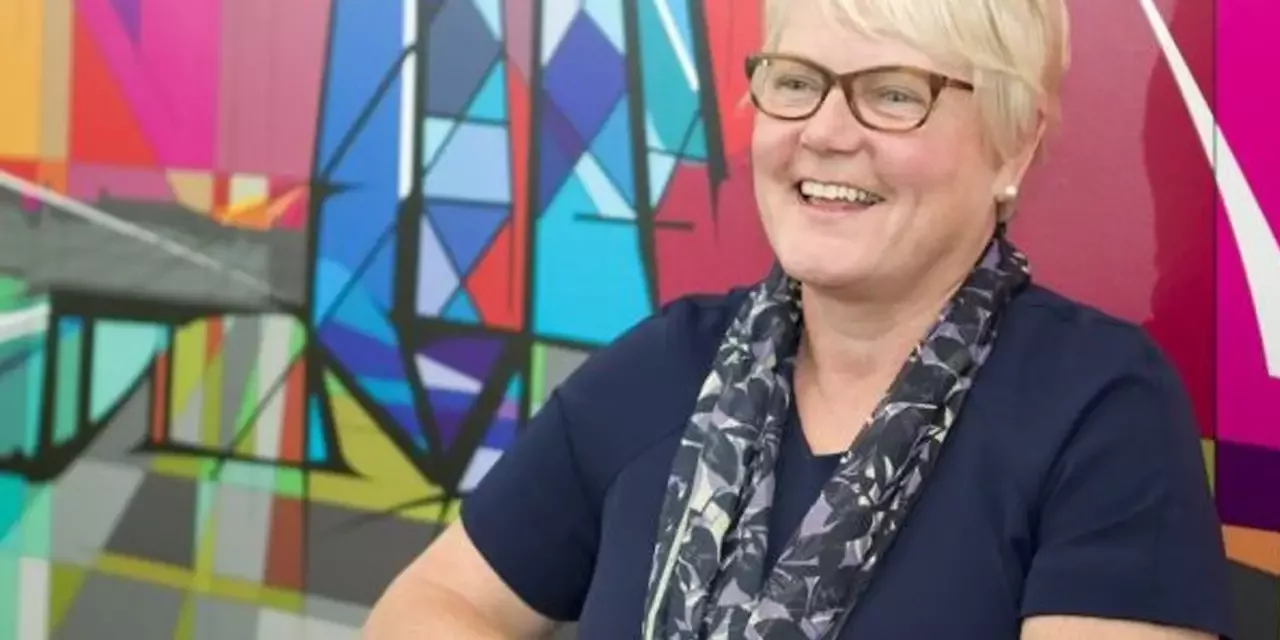Blog
·Dyslexia Awareness Week 2023: Working for Lexonik with Dyslexia

It’s Dyslexia Awareness Week, where we shed light on the challenges faced by individuals with dyslexia and celebrate the incredible work being done to support them. In this article, Lexonik’s Marketing Officer James Roachford tells his story about his time working for Lexonik whilst having dyslexia himself.
Lexonik understands that individuals with dyslexia often encounter difficulties with reading, writing, and spelling. As pioneers in literacy and language training, they have developed a unique programmes that help individuals overcome these challenges and unlock their full potential.
James tells his story of discovering more about his own dyslexia through his work at Lexonik and his conversations with the talented educators who he calls his co-workers.
Join us as we delve deeper into this story and the impact Lexonik has had.
Coincidences are strange, in the sense that the longer you look at them, the less coincidental they seem. That’s my overwhelming takeaway during Dyslexia Awareness Week, working for a literacy intervention provider, as a person with dyslexia.
Even stranger still, I work in Lexonik’s marketing department so, amongst other things, Lexonik actually pays me to write for them. That’s something that I would never have thought possible at one point in my life. But that’s the thing about coincidences; in many ways my dyslexia is a huge reason I ended up here. It was the catalyst for a love affair with words and writing that made me pursue marketing as a career, and gave me the ideals that made Lexonik the perfect place to work.
Lexonik was founded by Katy Parkinson, a dyslexia specialist and former member of the British Dyslexia Association. Katy worked with learners with dyslexia all her life and developed Lexonik whilst working for the Middlesbrough Education Authority as their Senior Learning and Language Team Coordinator. Last year, I had the pleasure of interviewing Katy for a blog I wrote for Dyslexia Awareness Week 2022.

Before interviewing Katy, Dyslexia Awareness Week had been a strange concept to me. I’d been aware of my own dyslexia since I was 6 years old and, at various points in my life, I was very keen to make sure others weren’t aware of it. If I could get away with it, I wouldn’t tell my educators about it. I never took extra time on exams or a scribe for my, frankly still atrocious, handwriting. I don’t say this proudly either; my stubbornness came from a place of fear. I was terrified of being viewed as ‘other than’. I realised this when speaking to Katy, she told me that when a learner has dyslexia and is struggling in school, they go one of two ways:
‘They either become a shrinking violet, who tries to keep their head under the parapet and just tries to survive, or they become the disruptive child.’
I was very much the former and in vain. My educators of course knew, or at least suspected, despite my best efforts to keep it to myself.
In college I had a teacher who asked me point blank ‘do you have dyslexia?’ I squirmed and sweated but he eventually pulled the answer he already knew out of me. Without my knowing he had then arranged for my exam papers to be transcribed by my various teachers. I only found this out when a disgruntled teacher informed me he had been at work till 9pm ‘trying to read my handwriting’. I had the gall to be angry with the teacher who arranged it; it’s only now that I understand he did me a favour and I wasn’t angry, I was embarrassed. But transcribing the papers didn’t make me ‘other than’ everyone else, it made me equal to everyone else. My teacher knew the content of my writings was fine, he just needed to ensure everyone else could see that. As a result, I got the A-Levels I needed to go to university. Without his decision, I wouldn’t have got my degree and I wouldn’t be writing this right now. Turns out, I needed a little bit more awareness about my own dyslexia to understand that.

Working with various former educators and literacy experts has led to many ‘eureka’ moments like that. Through talking to Katy and others I discovered why I had so much trouble learning to tie my shoes as a child, why once I had two job interviews in a week and ended up going to Thursday’s interview on Tuesday and missed Tuesday’s interview because of this mishap.
When I was first being inducted into Lexonik, I was told a piece of advice often given to educators when using our interventions is to use it with their top set first. I remember thinking how much that would have helped me and my fear of being ‘other than’: making learners feel exclusive rather than excluded.
I hated interventions as a child. Education was obviously different 19 years ago, when I was first withdrawn from my usual studies to attend ‘Mrs. S’s special class’. As a marketing person I can tell you, naming it that was a major branding problem. The execution wasn’t much better; we were working on what I now understand was phonics. Mrs. S sat at a small table with a white board, the name of the game was “see it, say it, spell it”. I was losing that game comprehensively. Mrs S was asking me to spell a word, I hadn’t absorbed the information she had given me before this, and I got it wrong. ‘Try it again’ she said, and then ‘again’ and ‘again’ and ‘again’. I just wanted to be left alone, I was embarrassed and even at 6 or 7 years old I knew I wouldn’t get it if nothing had changed since my last wrong answer. Out of options, I became visibly upset, ‘don’t be stupid James, you can get this’ is a reply that I remember clearly to this day. Now, it’s important to note Mrs S wasn’t calling me stupid for getting the answer wrong, she was calling me stupid for getting emotional. I’d wager neither is a great way to teach a child.
Compare that with Lexonik Leap, our phonics intervention. One of the major components of the programme is it can be adapted to allow for an individualised learning pathway, meaning the duration of the programme is dictated by the level of need. There is no one-size-fits-all approach to teaching any learner, let alone a learner with dyslexia. So, any intervention used needs to be flexible, because if a learner like me is getting the same question wrong again and again, there must be a route out for that learner, so they don’t feel like I did in that moment.
I never wanted to feel like that again; I wanted out of that intervention any way I could. For a lot of learners, that would have led to what Katy said about struggling creating disruptive learners. But it didn’t and I now realise why. Katy mentioned that learners with dyslexia will have to work harder to overcome their difficulties, but to motivate them to do that, you have to make it a team effort:
“If you use language like, ‘You need to work harder’ and point at them, then you’re giving all the responsibility to the child. I would never, ever do that. Instead, I would say something like, ‘We need to work hard together. If we work together, if you work with me, we can do it’. It's always the word ‘we’. That word is so powerful.”
I didn’t become disruptive because over the course of my education, I had a great team. I’ve mentioned a college teacher who supported me through my exams, but there was also a history teacher who gave me Sherlock Holmes books to read in secondary school, the primary teacher who initially got my dyslexia diagnosed, my mum who would sit at the dining room table with me all night long working on my spellings, an English teacher who made poetry come alive when he read it, and another English teacher who told me she’d loved my creative writing. Crucially, it felt like she sincerely meant it.
Over the years this team managed to engage me with literacy in a number of ways. When I was young, I didn’t want to read books, I found the prospect overwhelming. It was easy for me to get lost in a sea of pages, unsure of what I had read or what I was currently reading. Through my time working at Lexonik with skilled educators, I now realise I had a problem with comprehension. When talking with Katy she brought up The Baseball Study and I found its implications very familiar.
Conducted by Recht and Leslie, The Baseball Study involved learners reading a short story about half an inning of baseball. They would then be handed models and asked to recreate what had happened in order to test their comprehension of the story. The results were as such:
‘To their surprise, Recht and Leslie found that reading ability had little impact on how well kids understood the story. But knowledge of baseball did. In fact, those who were weaker readers did as well as strong readers if they had knowledge of baseball.’
The more interested in baseball the learner was, the better their comprehension. It rang true for me as I remembered I didn’t want to read books, but I did want to read Match Magazine. I loved football and even though reading was difficult for me, I was motivated to read by my interest in the sport.

This would continue with more difficult texts the older I got. Such as the aforementioned Sherlock Holmes novels and eventually poetry. I became fascinated in poetry when learning about metre and rhyme schemes, the idea that this thing I had struggled with all my life had definable rules was refreshing. It was no longer chaos for me - if I knew The Raven by Edgar Allen Poe was written in Trochaic metre, I could suddenly discern a number of things from the text. The metre creates a heartbeat sound and a rhythm that draws the reader into the unsettling world, then every last line in each stanza drops the final unstressed syllable, as if the heart is skipping a beat, as someone may do in the unsettling world Poe creates. The structure informs the meaning, just as my interest in the structure improved my comprehension of the text.
As part of their induction, every member of staff at Lexonik participates in a mock session of our programmes as if they were a learner. When I did, I was delighted to find that Lexonik programmes are full of these motivating techniques. Lexonik Advance bags contain a stop clock for example, not to put pressure on the learners, but to create a sense of competition. One of our Senior Regional Trainers, Ian Jones, writes about this in a previous blog:
‘Once you’ve nailed your motivators, you’re on to a winner. Assuming there’s no local rivalry to exploit, students may simply want to beat the results of their peers in a parallel group - “He is my best friend, but I have to beat him in this score!”
Lexonik interventions contain the same idea for motivating learners with dyslexia or any learners. Find their interests and use them to motivate them to engage with literacy. It’s a method that has worked for me time and time again. I’ve always known I had to work harder but I was lucky enough to be surrounded by the right people, who knew the right ways to motivate me to do so. Eventually I worked so hard at improving my literacy it became my favourite part of my education. English became both the subject I was best at and the one I most looked forward to. That led me to wanting to write for a living and here I am, doing just that.
Dyslexia Awareness Week was something I had found a strange concept. But because of it and working here at Lexonik, I’m now more aware of my own dyslexia. I now understand that the coincidence of having dyslexia and working for a literacy intervention provider is more of an inevitability. Because of my dyslexia and a handful of good educators, I fell in love with literacy. So, it’s only natural I would end up working with others who love literacy. That was my path, I now get to spend my days connecting schools and learners with literacy interventions that will help learners like me. Helping them to gain some of life’s most essential skills. Skills that will benefit them time and time again. Literacy will help them find their path, just as it helped me find mine.
If you have learners with dyslexia at your school or just want to improve literacy attainment, we’d love to help. Contact us today.